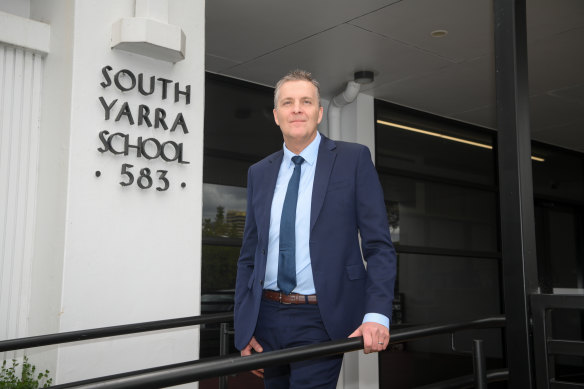By Alex Crowe
More than 40 state schools in Melbourne are full or overcrowded, with over a quarter of them located in areas pegged for huge development from next year.
Public schools in Melbourne’s south and south-east are among those under the most strain, including nine near a Chadstone “activity centre” that is fast-tracked for development.
Four of those schools in the City of Monash are among the top 10 Melbourne schools with the highest enrolment pressure index, an Education Department ranking not normally made public but obtained by The Age through Freedom of Information laws.
The index is defined as the ratio of student enrolments against the school capacity.
Mount Waverley Heights Primary School is 20 per cent over capacity, while both Glen Waverley Primary School and Pinewood Primary School in Mount Waverley are 13 per cent over capacity.
Secondary schools in the south and south-east are also among Melbourne’s most crowded, including East Doncaster Secondary College, at 15 per cent over capacity, and Ashwood High School, 9 per cent over capacity.
The department uses the index to inform school upgrade and enrolment decisions, including changes to school zones.
South Yarra Primary School was earmarked for development and had its zoning tightened after enrolments increased by 50 per cent over the five years to 2020.
Principal Neven Paleka said the staff room had been turned into a classroom while the school was under extreme pressure from increased demand, which was alleviated by the arrival of new classrooms in 2017 and 2020.
The development of apartments in the area and the schools’ increased popularity had contributed to the strain, Paleka said.

South Yarra Primary School principal Neven Paleka says the school received new classrooms to help ease the enrolment pressure. Credit: Justin McManus
He said the response to a smaller school zone, one of the tightest in Victoria, had been positive.
“Most of our school students ride bicycles and scooters to school or walk. It creates a community environment too.”
The state government has named 10 activity centres where councils will be stripped of planning controls in order to fast-track approvals and boost housing supply.
As well as Chadstone, they include Camberwell Junction, Ringwood, Moorabbin, Frankston, Epping, Niddrie, North Essendon and High Street in Preston.
The hubs were identified as part of the government’s housing strategy, which includes a pledge to build 60,000 homes in established suburban areas, with a view to expanding this across 120 Melbourne locations.
Several councils in Melbourne’s east have pushed back over concerns of strain on early learning centres and schools, including the City of Monash, which says the government needs to ensure critical infrastructure and services keep up with population growth.
Dale Dickson, chief executive at the neighbouring City of Stonnington, said the state government had provided no detail for how its planned level of development would create a liveable precinct at Chadstone.
Stonnington council was concerned about the access to community infrastructure including schools, open space and transport options, he said.
“Stonnington has a growing number of primary and secondary students, which will place additional demand on education facilities,” Dickson said.
The City of Boroondara – the proposed home of the Camberwell Junction activity centre – takes in Auburn High School, which is 2 per cent over capacity, and Balwyn Primary School, which is at capacity.
Further south, Moorabbin Primary School is 5 per cent over capacity in the City of Kingston, where the Moorabbin activity centre is set to take in thousands of new homes.
Near Essendon Junction, Strathmore North Primary School, which is 10 per cent over capacity, is the only overcrowded school in the north in an area pegged for an activity centre.
In total, 70 state schools are full or overfull in Victoria, including five in Geelong, which is among Australia’s fastest-growing regions.
Australian Education Union Victoria president Meredith Peace said large class sizes and high student-teacher ratios were unsustainable for teachers and for students.
“It means students with complex needs miss out on the extra attention they may require and workloads for teachers are increased,” she said.
Peace said Victorian state schools were already underfunded.
“The Commonwealth continues to provide capital spending for private schools – who build unnecessary and lavish facilities – while public schools, who receive no ongoing Commonwealth capital funding, struggle with a lack of adequate classrooms and learning spaces,” she said.
“Full funding would enable schools to adequately address student-to-teacher ratios and large class sizes.”
An Education Department spokesperson said the department was always planning for and responding to enrolment trends.
The spokesperson said Victoria had invested $16.9 billion to build new schools and provide upgrades and maintenance since 2014.
Start the day with a summary of the day’s most important and interesting stories, analysis and insights. Sign up for our Morning Edition newsletter.